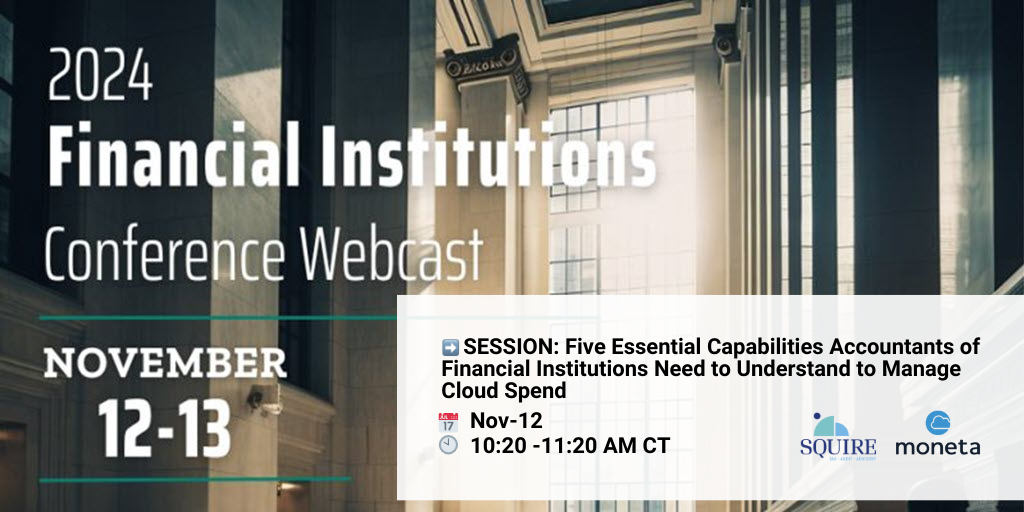Implementing Cloud FinOps takes multiple roles. It requires technical expertise and financial knowledge. But just as importantly, you need leadership support. In this post, we will explore the role that the Chief Financial Officer plays in Cloud FinOps, why the CFO is essential, and steps to gain CFO buy-in.
Why Call the Chief Financial Officer (CFO)?
The CFO typically oversees the financial health and decision-making of an organization. This includes managing budgets, tracking expenditures, and exploring strategies to enhance profitability. With the increasing shift towards cloud computing, the CFO’s responsibilities now extend to cloud financial management, making them integral to successfully implementing Cloud FinOps. The CFO is key to ensuring that the cloud strategy aligns with the company’s financial objectives and that investments in cloud technologies yield desirable returns.
Importance of Getting the CFO’s Buy-In
Getting the CFO’s buy-in is vital for several reasons. First, the CFO’s approval is often necessary for funding any Cloud FinOps initiatives. Second, the CFO can help champion the benefits of Cloud FinOps across the organization, influencing other stakeholders and facilitating buy-in at all levels. As a bridge between the company’s strategy and its financial reality, the CFO can ensure that the Cloud FinOps aligns with the overall business strategy. This alignment is crucial for the long-term sustainability and success of your Cloud FinOps implementation.
Communicating the Benefits of Cloud FinOps to the CFO
Understanding the benefits of Cloud FinOps and effectively communicating them to the CFO can greatly increase your chances of gaining their support. Below are a few areas to focus on:
Free EBITDA
Very simple….you will save a lot of money. To the CFO, that means “free” EBITDA. Cloud FinOps provides the mechanism for continuous cost optimization and ensures that organizations get the most value from their cloud investments. It must be an ongoing, disciplined, and intentional effort. When done properly, an increase in your cloud ROI will occur.
Clear Cost Visibility and Control
One of the primary benefits of Cloud FinOps is that it provides clear visibility into cost drivers of the cloud, including proper allocation of cloud spend to the appropriate cost centers. It enables organizations to monitor and control their cloud investments, which can be a significant portion of the IT budget. By providing granular insight into how funds are spent, Cloud FinOps allows for more informed decision-making, helping to ensure that cloud investments are aligned with business objectives.
Risks Mitigation
Finally, Cloud FinOps can mitigate financial risks associated with cloud usage, such as unpredictable costs and budget overruns. By enabling real-time monitoring and proactive management of cloud spend, Cloud FinOps can help prevent such issues, providing the CFO with a sense of security regarding the organization’s cloud-based financial risk.
Bridging the Gap Between IT and Finance/Accounting
Understanding IT and finance/accounting is imperative for the success of Cloud FinOps, and it’s the CFO who is best positioned to bridge the gap between these two departments. These teams often speak different “languages” based on their expertise; finance focuses on cost control and profitability, while IT is more concerned with technology and innovation.
Cloud FinOps, however, creates common ground. By combining IT’s technical knowledge with accounting/finance’s financial acumen, Cloud FinOps can ensure ideal optimized cloud spending. With cloud spend education under their belt, the CFO’s is an ideal advocate for Cloud FinOps within the organization.
Strategies to Gain CFO’s Support for Cloud FinOps
To secure the CFO’s support, it’s essential to present a compelling case for Cloud FinOps. Start with ROI forecasts that show how Cloud FinOps can help drive cost savings and enhance profitability. Next, showcase successful use cases, either from within your organization or from industry peers about cloud reporting and cost allocation. Real-world examples can demonstrate the practical benefits of Cloud FinOps, making its value more tangible.
Finally, align Cloud FinOps with the business’s strategic objectives. Show the CFO how Cloud FinOps supports broader organizational goals, reinforcing its relevance and importance.
Building Collaborative Teams for Cloud FinOps Implementation
The success of Cloud FinOps relies heavily on effective collaboration between the IT and finance teams. This collaboration ensures that both teams have a common understanding of cloud spend and helps achieve the common goal of cloud cost optimization.
Leadership can play a crucial role in cultivating this collaboration. By promoting open communication, setting shared goals, and ensuring mutual respect, the CFO can foster a team culture conducive to successful Cloud FinOps implementation.
Get Your CFO on Board
Gaining the CFO’s support for Cloud FinOps is critical for its successful implementation and sustainability. You can secure and sustain the CFO’s buy-in by effectively communicating the benefits, aligning Cloud FinOps with business goals, and promoting collaboration between IT and finance/accounting. In this rapidly evolving digital age, adapting to innovative practices such as Cloud FinOps is essential to ensure ongoing financial health.




.png)
